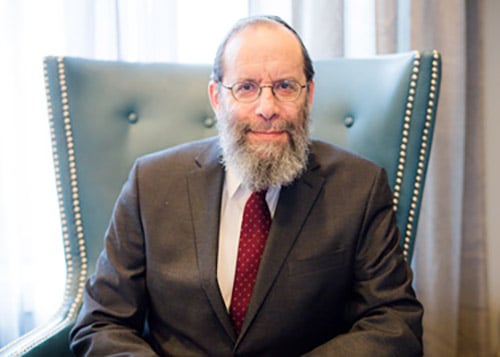If you are not a physician and you are familiar with the name “Whipple,” it may be in relation to Mr. Whipple, the supermarket manager in the TV commercials in the 1970s and 1980s who cautions shoppers, “Please don’t squeeze the Charmin.” Or if you’re a little younger, maybe you know it from an episode of Grey’s Anatomy.
If you are a physician and you hear the name Whipple, you undoubtedly recognize multiple eponymous entities that reflect that name—Whipple’s triad, Whipple’s disease, the Whipple procedure. One wonders how one man could have done so much. And, in fact, there were two Whipples. Dr. George Whipple was the founding dean of the University of Rochester School of Medicine and shared the Nobel Prize in Medicine in 1934 for discovering the role of the liver in pernicious anemia, leading to the role of vitamin B12; and Dr. Allen O. Whipple (O. for Oldfather, if you can believe it), a prominent surgeon and the subject of today’s article. The two Whipples were not related but remarkably became close lifelong friends after they met when Allen treated George for a severe case of malaria.
Allen Whipple was the eighth-generation progeny of committed Christian missionaries, born in 1881 while they were serving in Azerbaijan, Iran, where he lived until the age of 14. He learned French, Persian, Turkish, Syriac, Latin and Arabic before going to Princeton where he graduated in 1904, going to medical school at Columbia. He did his surgical residency at Roosevelt Hospital and then returned to join the faculty at Columbia, rising to become surgeon-in-chief at Columbia-Presbyterian in 1921, a position he held for 25 years. After retirement, he returned to the study of the history of medicine in Syria and Iran and published extensively on the history of medicine in the Muslim world.
Let us spend a moment discussing pancreatic cancer and why it is so deadly. Only 15-20% of pancreatic cancer is sufficiently localized to undergo surgical resection, the only potentially curative intervention. Nowadays, of those who undergo a good resection, 25-30% can have a long-term survival. Most tumors are in the head of the pancreas; they require a procedure known as the pancreaticoduodenectomy, which has come to be called the Whipple Procedure. So a cure rate for pancreatic cancer approximates 20% times 25%—or about 5%.
In the 1970s, this procedure had a perioperative mortality rate of 15% or more. At the time of Whipple or later, it was as high as 30%. In recent times, the surgical mortality rate has declined to 3% or so, thus making utilization of this procedure more practical and increasing the potential cure rate for pancreatic cancer. This perioperative mortality rate is highly operator-dependent, with significantly higher mortality rates at hospitals that do fewer Whipple procedures. The gains in mortality have resulted from development of the surgical ICU, improvements in surgical procedures and better management of thrombosis and infections.
The conventional procedure involves removal of the pancreatic head, duodenum, 15-20 cm of the jejunum, common bile duct and gallbladder, and a partial gastrectomy. All these organs are situated closely together and adenocarcinomas of each can invade among them easily; indeed, it is often difficult to ascertain the exact site of origin of a tumor in this region. The pancreas itself is retroperitoneal or in the back (behind the peritoneal cavity or abdomen) where the kidneys lie as well. It has been said, “God put the pancreas in the back because He did not want surgeons messing with it.”
The truth is that in the pre-CT scan era, it was not easy to distinguish specific cancers among these organs with the available radiographic studies. Thus, in the time of Whipple, in the 1930s, gastric cancer was the No. 1 cancer in the U.S.; part of that may have been overlap with pancreatic cancer.
Successful removal of the head of the pancreas where most pancreatic tumors occurred required the resection of these other structures as well. The first successful pancreaticoduodenectomies were performed in the early part of the century by two other surgeons for ampullary cancers (the opening of the duodenum). In early 1934, Dr. Whipple made some significant improvements to the procedure for ampullary cancers—this was published, although two out of the three patients died very soon after surgery.
The great breakthrough came in 1935 when he was preparing to demonstrate his clinical skill on a patient with gastric cancer in front of an audience of distinguished clinical guests in a clinical amphitheater at Columbia. The planned procedure was a simple partial gastrectomy, but when the patient was opened, Whipple realized that the patient had pancreatic cancer, located behind the stomach. He improvised on the spot. He removed the pancreas, stomach, jejunum, duodenum and common bile duct, in essence doing a radical pancreaticoduodenectomy. This became the Whipple procedure. Unfortunately, while that tumor was totally removed, I have not been able to ascertain the outcome for that particular patient. During his career, he performed a total of 37 of these procedures, 30 for cancer and seven for chronic pancreatitis. About one-third died in the post-operative period.
This procedure remains the mainstay of surgery for tumors in this region. Earlier detection due to improved diagnostic methods combined with improved surgical technology and supportive advances have dramatically reduced the perioperative mortality of the procedure and widened its availability.
Alfred I. Neugut, MD, PhD, is a medical oncologist and cancer epidemiologist at Columbia University Irving Medical Center/New York Presbyterian and Mailman School of Public Health in New York. Email: ain1@columbia.edu.
This article is for educational purposes only and is not intended to be a substitute for professional medical advice, diagnosis, or treatment, and does not constitute medical or other professional advice. Always seek the advice of your qualified health provider with any questions you may have regarding a medical condition or treatment.












